#long hike
Text




July 3 2022 - Oh the things I could say about this hike…. It was both purposefully and accidentally the longest hike I’ve gone on. Purposefully since we had planned for it to be around 8-9 miles, accidentally in that we read the markers wrong at the top of Milbrook mountain and went 2 miles into Minnewaska State Park and had to turn around. We gained almost 1000ft of elevation on this hike… which to me was fantastic…to my hiking partner however, not so good. You see she forgot to mention that she has a deadly fear of heights until after we started the excursion. Luckily I am a therapist so I was able to talk her down from a panic attack but I don’t think she will be doing any future mountain hikes with me, maybe a nice leisurely nature walk! Love her so much for challenging her fears and even more proud of her recognizing her limits moving forward. Let me tell you we definitely got some height on this hike. To this day this is one of my favorite and most challenging hikes, in many ways. On this hike I bit ass and fell (as per usual unfortunately, I have fallen on all my hikes, I HAVE invested in walking polls this week and they will make an appearance on this blog soon). So back to the main thought… I bit ass climbing up a scramble on a ridge falling and bashing my knee into a sharp rock. Unfortunately I was bleeding so my friend insisted she take a look - this is how I ended up bare ass at the top of a mountain, as you cannot roll workout leggings up past your knee. THAT was an experience I will tell you that. Still have a scar on my knee from it. Luckily our hiking trail was pretty bare as this was a more secluded trail with ridges and some more intense scrambles. We were crawling up some steep ridges at some points on our hands and toes. We started this hike at an early hour and didn’t finish until we were racing to our car to beat the sun setting. This hike I finally got my new little fanny pack- nicknamed the ugly pack- I am obsessed with it; and as you can see I got real hiking boots. I would say with proper gear hikes are more accessible to me as I don’t have to worry about back pain or rolling an ankle now (my boots have extra ankle support for many weak ass ankles).



The Hike Details:
Location: Mohonk Preserve, NY
Hike Trails: Traps Road > Bayards Path > Milbrook Ridge Trail > Coxing Trail > Traps Road (this does not include our brief detour into Minnewaska trails wise)
Miles: 11.6
Elevation gain: 928ft
Highest Elevation: 1622
Temperature: 82°/61°

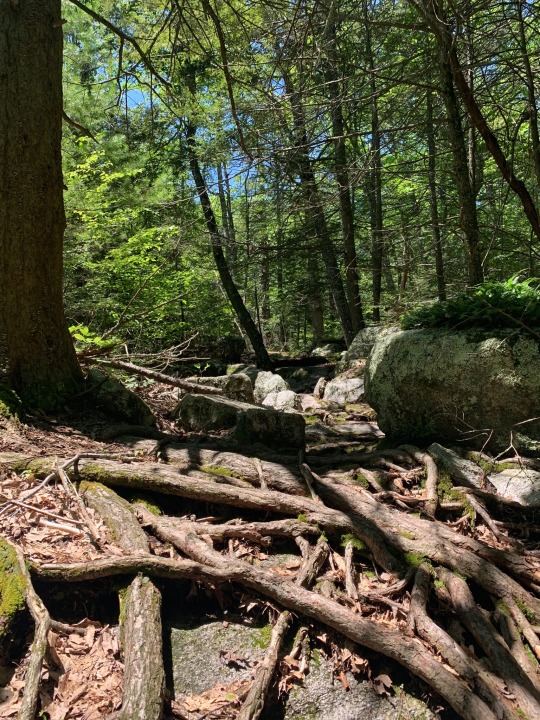

Things I learned from this hike:
- What you put on your back matters, this fanny pack (albeit so ugly I love it) made hiking so much more enjoyable since my back wasn’t aching within the first few miles
- Hiking boots HIGHLY recommend, that’s all I say on that
- Finally packed enough water….had we not done an extra 2 miles on accident; I was parched by the end
- Hiking as the sun is setting is mildly unsettling, especially when you saw signs of large animals throughout the hike, we were booking it by the end of the hike
- I still concur that pull apart cherry Twizzlers are a god tier snack when hiking
#hike#mountains#forest#fitness#nature#photography#hiking#hikers#nature hikes#day hike#long hike#they hike
6 notes
·
View notes
Text



Read through the entirety of The Long Hike by Patches! Super cool world and comic!
0 notes
Photo

Sunset on the Matterhorn - Alpine Haute Route, June 2021
photo by: nature-hiking
#sunset#matterhorn#lake#mountains#landscape#alps#switzerland#zermatt#sunset on the matterhorn#AHR#Alpine Haute Route#long distance trail#wilderness#hiking#trekking#nature#photography#original photography#photographers on tumblr#AHR 2021
5K notes
·
View notes
Text
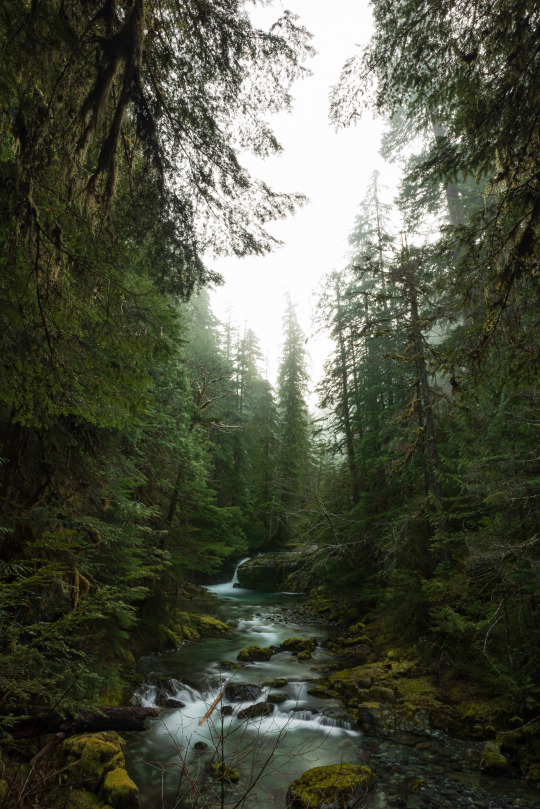
Kopetski Trail
2K notes
·
View notes
Text
Why is everyone in the world except me unable to figure out the optimal way to load a dishwasher, this is such a burden. I don’t want to be a dishtator but I can’t allow a variety of opinions when it just makes SENSE for wine glasses to be over here where the tray is deeper. You put a small leg-less glass there you’re going to run into problems later can’t you see that?? no long-term vision. No sense of greater strategy, but you can’t live in the moment while loading dishes. You know when fairytale princesses don’t want to marry and give would-be suitors impossible trials, well that would be a good one. I shall plight my troth to the first person who can load an entire dishwasher without doing anything preposterous
#i've had a lot of visitors lately and it was great for socialising baby poldine#she's going to be a good hiking companion someday!#we took her on her first long hike far away from any other llamas and she was very stressed but very brave#we invited cats to tag along as comfort animals for her and it helped#i'll make a post soon!
4K notes
·
View notes
Text
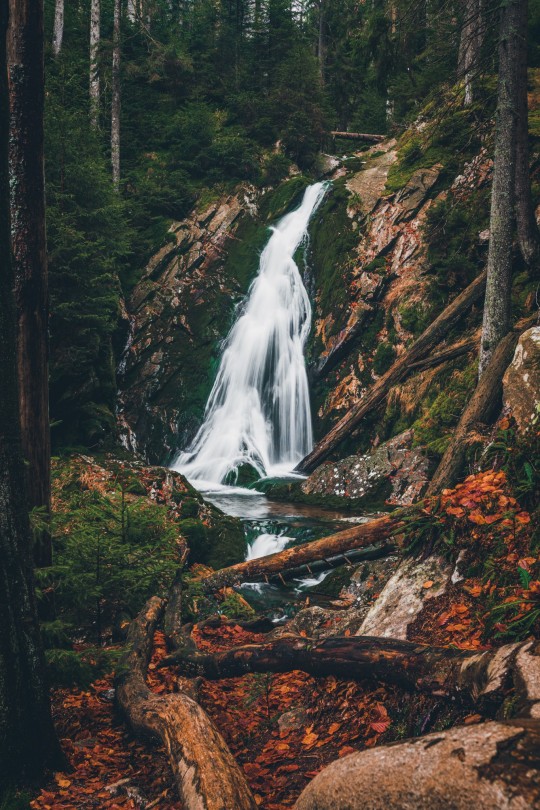
Waterfall
#photography#nature#wanderlust#moodygrams#landscape#forest#dark forest#tumblr photographer#tumblr photo blog#dark#naturecore#nature hikes#nature photography#long exposer photography#waterfall#woods#fall vibes#moody#dark moodboard#moodyphotography#photographers on tumblr#photoblog
910 notes
·
View notes
Text

Path through the hydrangea
Bailey Arboretum
September 14th, 2023
#aesthetic#photography#mine#nature#aesthetic blog#new york#beautiful#ny#cottagecore#plants#Long Island#flower#flowers#summer#trees#plant#hiking#hike#outdoors#travel#tiktok#Pinterest#green#pink#sun#newyork#ethereal#earth#tumblr#inspirational
550 notes
·
View notes
Text
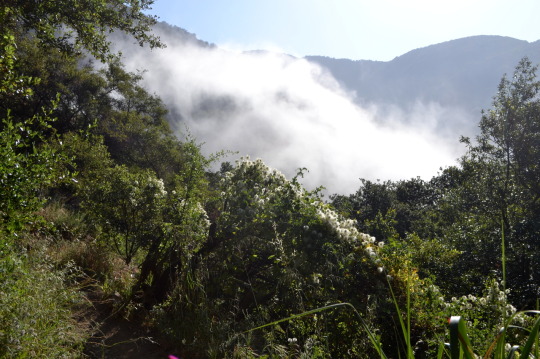









Los Padres National Forest, California.
The road was closed and I wanted to be at the far end of Romero, so I just had to hike it from end to end. It's only a little long for this, but most don't do it. Ocean views up one side, long views over increasingly large mountains on the other. It felt good to do this one in its complete form. I even went on to Cottam Camp after reaching the end of the trail. From April 2015.
#day hike#long hike#thru hike#landscape#wildflowers#Romero Canyon Trail#nature#California#Santa Barbara County#Los Padres National Forest#travel#hiking#Blue Canyon#Romero Canyon#outside#mountains#ocean view#mountain view#at the interface#hike
0 notes
Text
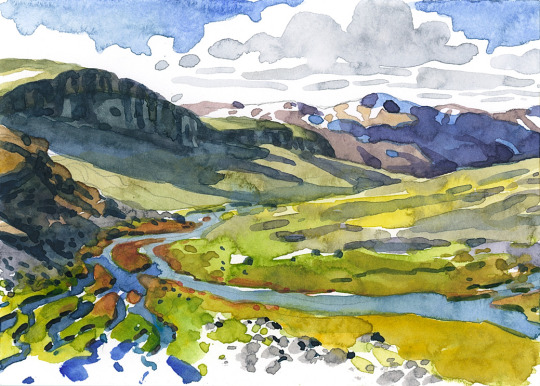
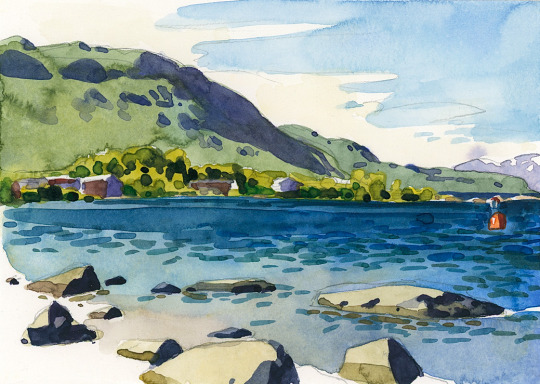
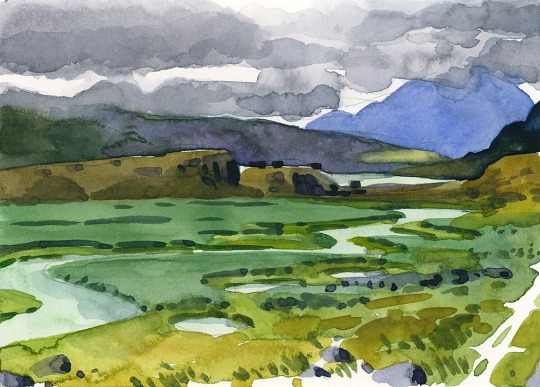

More Kungsleden watercolours!
1) View from the highest point of the Kungsleden: The Tjätkja pass. Seeing the expanse of this landscape, the beautiful colours, all those textures and its remoteness was very moving and it feels so special to me that I got the opportunity to paint and thus spend a little longer in this place, feasting my eyes and filling my heart.
2) Saying Goodbye to the trail by having lunch in the harbour with perfect views of Njulla.
3) Murky afternoon at Alesjaure. We walked a bit further past the hiking cabins and found a good spot for wild camping halfway down the lake. Alesjaure greeted us in the wildest shade of turquoise next morning.
4) Lunch break up at Tarfala, looking at one of the glaciers.
I cooled down so much from sitting still and painting, that it took me 1,5 h walking downhill again, before my fingers weren't numb anymore.
You can find Kungsleden part 1 here:
https://chintzmann.tumblr.com/post/725753382562840576/i-spent-my-holidays-hiking-the-kungsleden-in
hiking#camping#holidays#holiday memories#Kungsleden#Sweden#long distance trails#nature#landscape#watercolours#watercolors#charlotte hintzmann#illustration#painting
#charlotte hintzmann#illustration#landscape#nature#kungsleden#hiking#camping#holiday drawings#holiday memories#long distance trails#watercolours#watercolors#painting#holiday
904 notes
·
View notes
Photo

Spanny Falls, Dominica by leandra (&eric)
649 notes
·
View notes
Text
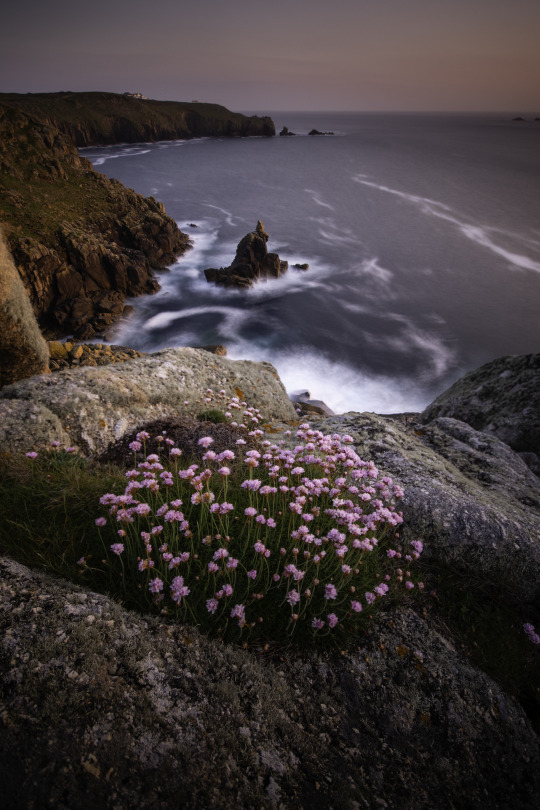
Sunsets and Wildflowers
Land's End, Cornwall
#alexmurison#sunset#wildflowers#nature#wildlife#photographers on tumblr#original photography#landscape photography#lensblr#flower#flora#fauna#long exposure#walk#walking#hike#hiking#adventure#explore#explore more#never stop exploring#explore to create#wander#wanderlust#wilderness#wilderness culture#cornwall#lands end#uk#travel
712 notes
·
View notes
Text
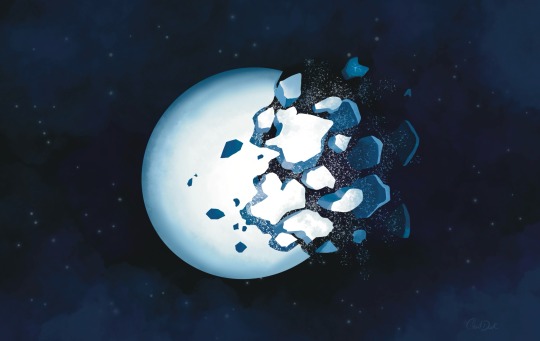

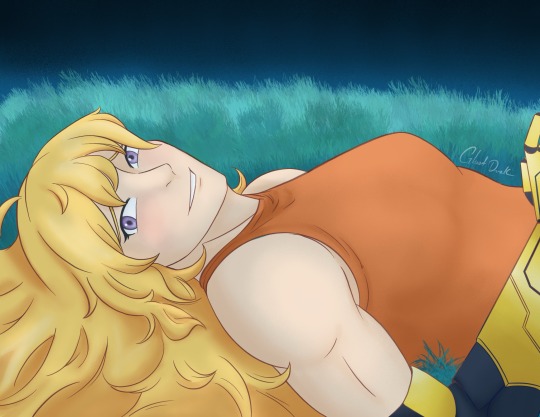

Hello hello!!
For my @bumblebybigbang and first ever entry I got to work with the two sweetest people
Please check out @strangelythirsty ‘s fic here and @chromiumalien ‘s artwork for it as well!!
Speaking of which, i also got the opportunity to work along Chrome to make this collab!!
They were in charge of Yang and the background and I got to work on Blake and the Grimm!
(Beware spoilers ahead if you haven’t read it!)
Hope you guys like it!

As a side treat, concept art!!

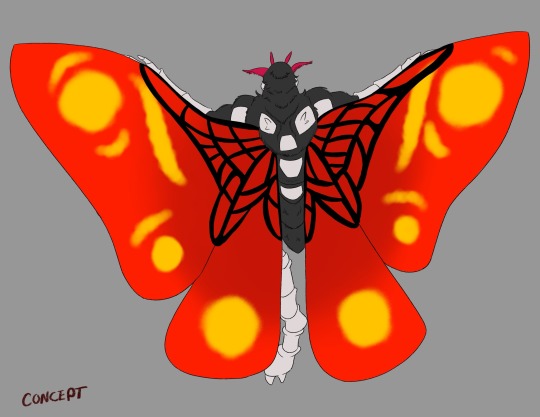
#blake belladonna#rwby#yang xiao long#bumbleby#rwby blake#rwby bumbleby#BBB2023#bumbleby big bang#suspense#gothic horror#hiking au#Grimm as cryptids
276 notes
·
View notes
Photo

Clouds creeping up the mountains - Tour de Monte Rosa, July 2021
photo by: nature-hiking
#clouds#fog#mountains#valley#landscape#TMR#Tour de Monte Rosa#alps#long distance trail#wilderness#hiking#trekking#nature#photography#original photography#photographers on tumblr#TMR 2021
2K notes
·
View notes
Text
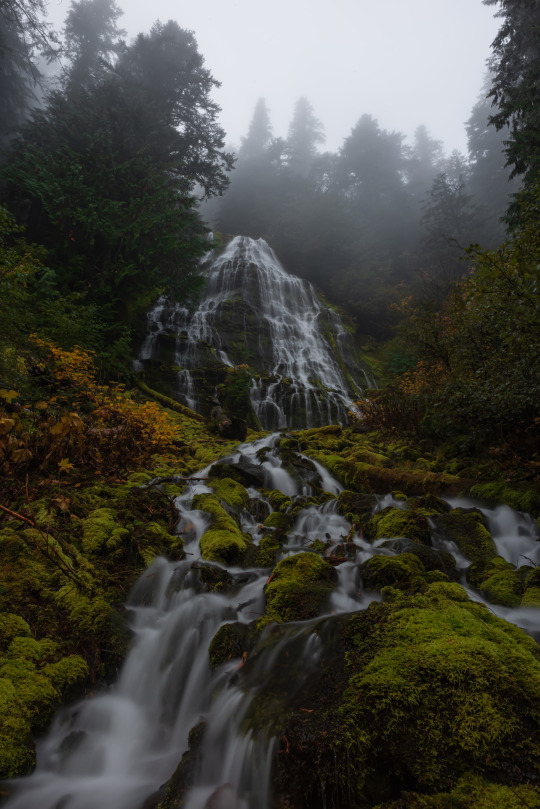
Freya Falls
1K notes
·
View notes
Text

Autumn
#photography#wanderlust#nature#landscape#moodygrams#forest#dark forest#naturecore#nature photography#nature hikes#fall#fall vibes#autumn#autumn vibes#woodland#trees and forests#long exposure#tranquility#beauty#beautiful#tumblr photo blog#tumblr photographer#tumbler artists#artists on tumblr#photographers on tumblr
736 notes
·
View notes
Text
Foot Care for Hiking - A Guide

Hiking is rough on your feet. Any activity where you spend a lot of time moving around upright is going to be, but between the added weight of a pack, the irregularity of the terrain, and the intensity of conditions in the outdoors with heat, cold, wet, etc., hiking for miles can leave your feet far more sore than walking an equal distance on a flat paved road. From getting blisters to bruising toenails to even cases of trench foot among thru-hikers, there’s a lot of problems that can arise.
But if you’re out in the backcountry and your feet are blistered and miserable... you still need them to walk out. So it’s essential that you take care of them, so they can carry you and back safely!
Here are some tips for foot care and maintenance for the new hiker:
BEFORE YOU PLAN TO HIKE
1 - Get Hiking Shoes That Fit Well. This is honestly the biggest thing.
Proper hiking footwear with decent support and traction is really important, not just for comfortable feet, but also for overall safety. A lot of injuries among novice hikers stem from inappropriate footwear that leads to slipping and falling. Hiking boots, hiking shoes, or hiking sandals designed for cushioning your feet and gripping the terrain are worth investing in, since even an expensive shoe is cheaper than the doctor’s bill for a broken leg (ask me how I know!)
But the right type of shoe won’t matter if it doesn’t fit your foot. If your shoe is too tight, it’s going to pinch and rub against your foot uncomfortably and give you blisters. If your shoe is too big, your foot is going to slip around in it, rubbing against the shoe... and give you blisters. If your toes repeatedly ram into the end of the toebox of your shoe because of poor fit, this will result in achy toes, bruised toenails, and possibly even toenail loss on long-haul hikes.
When you buy hiking footwear, try to do so in person. Different brands will have different fits, and you may find one in particular is better suited to the shape of your foot. For instance: I almost exclusively wear Keens because of the wide toe box, since I have narrow heels and wide toes on my weird-ass Daffy Duck feet. An associate may be able to guide you, especially if you’re in an outdoors-oriented store.
So once you have some shoes that fit comfortably and are hiking appropriate--
2 - Break Those Bad Boys In.
Don’t immediately go on a long hike in a brand new pair of shoes you’ve never worn. Practice first wearing them around the house, running errands in them, going for walks in them, running up and down stairs in them, and letting them mold to your feet. Then try some longer walks or short hikes before setting out on a lengthy expedition. If you’re like me and wear specific insoles, wear them in your hiking boots while breaking them in.
If you notice certain issues, like heel slippage or pressure on the top of your foot if you have high arches, try looking into different lacing techniques. This article has some suggestions, and there’s a lot more techniques out there. Experiment with what lacing technique is most comfortable for you!
PREPARING FOR YOUR HIKE
You have your boots and you’re planning to hike. Awesome! Here are some foot care steps that should be part of your hiking prep routine:
1 - Trim Your Nails. Long toenails can snag, and also can ram into the ends of your shoes, causing bruising, pain, and even ingrown toenails. Google “Hiker’s Toe” at your own risk. Keeping your toenails neatly trimmed is a good preventative step, and one I always take the night before a hike.
2 - If you’re prone to blistering, Tape Your Feet. I know that because of some weirdness in my stance and gait and the shape of my feet, there are spots where I am always prone to blistering on a hike. If you’re a brand new hiker, you might not be aware of any problem spots yet -- or you might be the lucky sort who doesn’t have any! -- but if you know you tend to get blisters on the backs of your heels, or anywhere else, get your tape out.
I use Leukotape P, since it’s breathable and sticks well even when it gets damp from sweat, but plain old drug store brand cloth medical tape will do in a pinch. Tape up any problem areas preventatively before setting out -- the tape will provide a barrier between your skin and the area of your boot that’s rubbing against it, reducing the friction. It also secures that top layer of skin in place, reducing the shearing effect between upper and lower layers of skin that results in blister formation from repetitive rubbing.
3 - Put on Good Socks. Your socks should be the right height for your shoe. If you have ankle-high boots, don’t wear low-cut socks; you want your socks to be a consistent barrier between your shoe and your skin. You also want socks that-- like your shoes -- fit. You don’t want them so snug that they’re digging into your calves and cutting off circulation, but they shouldn’t be loose and moving around in your boot either, and the heel cup should line up with your foot’s heel.
For sock material, merino wool is the go-to choice among hikers, though polyester and nylon also make appearances. Wool socks are great because wool stays warm even when it gets a bit damp, and wool socks can absorb a lot of moisture before they feel wet, and dry quickly. As a bonus, wool doesn’t hold on to stink as much as some other fabrics!
4 - Stock Your First Aid Kit. You should always hike with first aid supplies, and I always keep extra blister pads, blister dressings, and medical tape in mine...
ON THE TRAIL
So now you’ve finally hit the trail and you’re heading out into the wilderness -- but you still shouldn’t forget about your feet! Pay attention to any pain, pinching, rubbing, or other discomfort in your feet, and don’t hesitate to take a pause to fix problems as they come up. Got a pebble in your shoe? Don’t suck it up-- stop and take it out!
An ounce of prevention is worth a pound of cure when it comes to foot first aid, and smart hikers address small problems early on before they have a chance to become big problems and potentially incapacitate you out in the backcountry. So never be afraid or ashamed to stop if something is up with your feet -- you might feel like a pain in the ass if you’re calling a stop while hiking with a group, but I guarantee you, it’s way less trouble to stop for five minutes for someone to fix their shoe than it is to half-carry your friend with horrible blisters the last mile back to the parking lot.
KEEP YOUR FEET DRY
For hikes with a lot of water crossings, I usually pack extra socks in case I fall in and soak a foot. Wet socks and shoes can cause a whole host of problems for your feet, from blisters on a short hike to trench foot in multi-day hikes in wet conditions. Wearing wool or quick-dry materials in your socks will help, but a spare pair if you get drenched is always helpful. If you get wet and need to change socks -- do it. If you need to take a break to dry out your feet -- do so.
SPOT THE HOTSPOTS
If you’re hiking at an incline, such as going through hilly terrain or up a mountain, you may feel your shoes slipping and rubbing in new ways, causing chafing or pinching that didn’t happen when you were breaking your shoes in on flat ground. This is unfortunately pretty normal, as the angle of your foot and ankle are different when you’re going up a slope than on flat ground. Be very mindful of hotspots forming from this change in angle and stop to deal with them ASAP!
“Hotspots” are precursors to blisters. When you pause to take your shoe and sock off, you might see an angry red patch of skin, but no visible injury -- yet. At this point, you can still prevent a blister from forming. I mentioned earlier taping up with Leukotape, and I always keep a roll of medical tape in my pack, along with a knife I can cut it with. Blister pads (that essential thing to have in your hiking first aid kit!) are also great -- I’ve kept a bad hotspot from fully turning into a blister and rupturing by putting on a blister pad directly over the affected area, and then securing it in place by taping up the entire back of my foot before continuing.
DEAL WITH BLISTERS SOONER THAN LATER
If you didn’t notice the warning signs until it’s too late and you’ve got blisters -- again, blister pads. Keep them as cushioned as possible to try to avoid rupturing them. If your feet are in a lot of pain and you’re still outbound, seriously consider turning around and heading back -- it’s only going to get worse, and you’ll be even further from help. There’s being tough, and then there’s being stupid.
Again: try not to let your blisters rupture. A torn blister is an open wound and an easy vector for infection, plus they take longer than intact blisters to heal. If your blisters do tear, immediately get your first aid kit out and clean and bandage them. Don’t just slap a standard band-aid on them either -- use an actual blister dressing that seals it in on all sides to minimize infection risk. If your blisters are extremely fluid-filled and you can’t get your shoes back on and can’t hike out without draining it and have NO OTHER CHOICE... (this is anecdotal advice and NOT the advice of a medical professional)... sterilize the area and your tools with alcohol wipes, then make a small incision with a knife or pin from your repair kit (again, STERILIZE IT FIRST) at the EDGE of the blister to drain the fluid. Make the incision as small as you can while still allowing it to drain, don’t tear or remove the top of the blister, and then clean and bandage the area thoroughly. Check on your dressings periodically when you take breaks, and change them as needed.
Side note: Do not apply medical tape directly on an unruptured blister. When you peel that tape off at the end of the day, there’s a good chance it will rip that blister right open and you will scream like a banshee and scare the dog.
TAKE REST BREAKS IF YOU NEED THEM
If you’ve been doing mile after mile and your feet are just sore, take a break, even if there isn’t a blister emergency. Sit down on a nice rock, take your shoes off, rub your feet, air out your socks, and enjoy the scenery. You’re out in nature -- enjoy it for a minute. I’ve stopped by an ice cold babbling mountain brook and let my feet soak for some nice chilling hydrotherapy and to listen to the running water, just because I could. Allow your body to rest a bit, and then continue onward.
AFTER YOUR HIKE / BETWEEN HIKES
You’ve successfully completed your hike and made it home! Now what?
Immediately:
Take off your hiking shoes, and undo the laces so they can air out. Those puppies are gonna be ripe, so maybe toss in some baking soda to soak up the stank. Hot, wet conditions inside hiking boots are a good place for bacteria and fungus to bloom, so don’t just stuff them in a dark and musty closet until they’re good and dry.
Carefully peel off any tape on your feet you’ve added, and tend to any blister dressings or injuries.
WASH YOUR FEET. I shower pretty much immediately after a hike, but always put extra attention into cleaning and scrubbing my feet -- again, don’t want bacteria or fungus. Afterwards, I often rub in some lotion.
After that:
Take note of any issues you had, and think about how to deal with them in the future. If you got hot spots in certain places, write that down and tape those places up preemptively next time you hike. If your socks kept riding down in your boots, try different socks next time. If you forgot something in your first aid kit, or used up something that needs replacing, make sure you’re well stocked for your next hike.
If your feet are sore after a hike, a nice hot soak can be very soothing. If they’re swollen, try icing them for 15-20 minutes and elevating them. If foot pain still persists after a couple of days and hasn’t improved, you may want to check in with your doctor as there could be a bigger problem such as tendonitis, plantar fasciitis, or a stress fracture.
You might find yourself developing calluses in certain places, and while calluses can have protective qualities as your feet’s homemade armor, letting them get too thick can also cause problems. I shave down my calluses periodically and try to keep them at the texture of “supple worn leather” and not “crunchy horn” to avoid cracking and blistering.
--
Hiking can be a lot of fun, and it’s even more fun when your feet aren’t an absolute disaster zone. So get good shoes, be prepared to address any problems that come up, and listen to your feet. Take good care of them, and they’ll take you anywhere!
#lena hikes#beginner hiking guide#foot care#hiker#blisters cw#foot problems#long post for ts#don't fuck up your feet kids!
130 notes
·
View notes